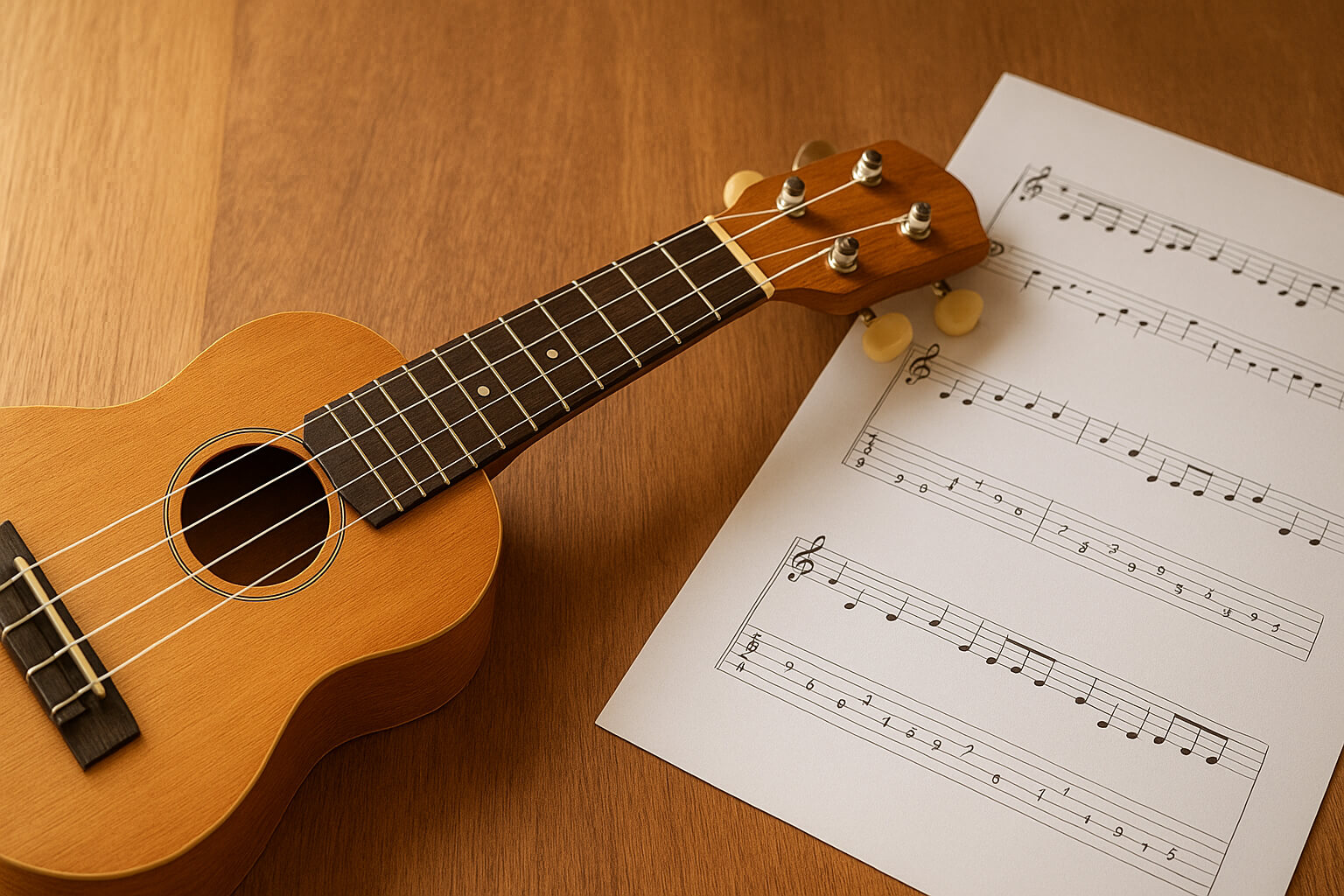August 18, 2025

Starting your ukulele journey is exciting, and learning to read tablature—or "tabs"—is one of the first skills you'll master. Tabs simplify the learning process by showing you exactly what frets to press on which strings. Let’s break it down slowly but thoroughly, with practical examples and helpful resources.
Ukulele tabs are a simplified, visual shorthand for playing songs—no traditional music notation needed. Instead of notes on a staff, tabs use:
Example:
A|---0--- E|---1--- C|---0--- G|---2---
This tab illustrates a C major chord, with each number showing the fret to play on each string.
Here’s how to read the lines correctly:
If you see 3 on the top line, you’re playing the A string at the third fret.
0 = Open string (no fret pressed)1, 2, 3, etc. = Fret numbers for your fingers to pressExample:
A|---3--- E|------- C|------- G|-------
This means: pluck the A string at the 3rd fret—producing a C note.
When numbers appear stacked—aligned vertically—they form a chord, meaning you play those notes simultaneously.
For instance:
A|---0--- E|---0--- C|---0--- G|---0---
Playing all strings open creates a C6 chord, full and bright.
Numbers spread out horizontally represent melody or riffs—played one note at a time:
A|---0---1---3--- E|---------------- C|---------------- G|----------------
Here, you play a simple ascending sequence on the A string: open, then first fret, then third fret.
For mental reinforcement, check out this excellent Fender guide to ukulele basics, including tuning, strumming, and chords (Fender).
You’ll want your ukulele properly tuned (G-C-E-A) so tabs sound right. Use a clip-on tuner or apps like GuitarTuna to stay in tune (Ukeuniverse, Instrument Insight). Proper posture—sitting upright, relaxed shoulders, and holding the ukulele securely—can make practice much more comfortable (Ukeuniverse).
Start with a handful of basic chords—C, G, F, and A minor—and practice switching between them. Combining chords with simple strumming or melody lines (like tabs) builds coordination quickly (ukuleleplanet.net). Consistent practice, even just 10–15 minutes daily, builds muscle memory and confidence (ukuleleplanet.net, ukulelebasicsforbeginners.com).
“Ukulele-tabs.com made my uke journey so much smoother—it’s simple to understand.”
—Reddit user (Reddit)
“I practiced chord transitions slowly, then added strumming patterns—I still go slow to avoid mistakes.”
—Reddit user (Reddit)
These candid insights from the ukulele community underscore how simple practice strategies and accessible resources can make all the difference.
Ukulele tabs are a beginner’s best friend—visually intuitive and rhythm-agnostic, they let you start playing real songs in no time. By combining tab reading with foundational tips on tuning, posture, rhythm, and chord changes, you’ll build confidence quickly.
Would you like me to craft:
Stay up to date with the latest tips, expert insights, product reviews, and step-by-step guides to help you grow, create, and succeed—no matter your industry or passion.